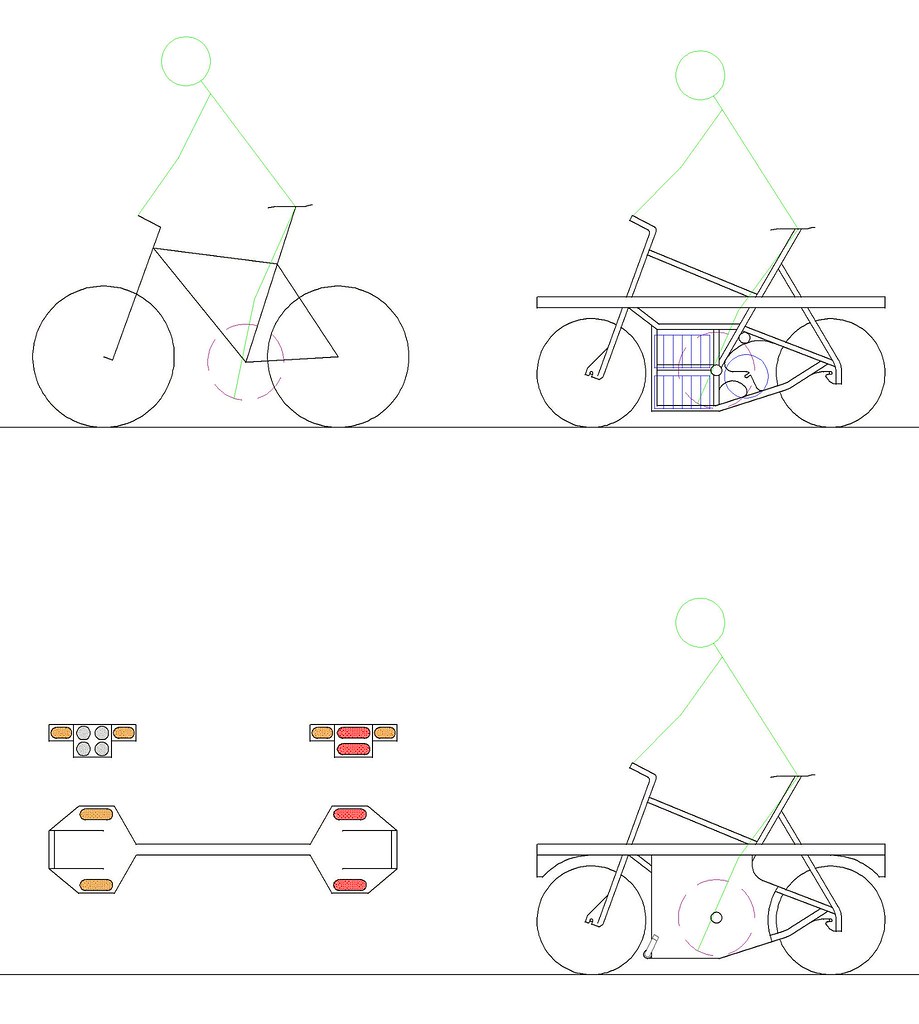A whole lot depends on how much light your trying to push wattage wise compared to how much wattage your motor will be pulling. In my case I want that to be at least 100watts minimum for lights for the ride home. I full well intend to be the best lit object on the road with commercial big rig type sealed 6" oval brake/tail lights, rear turn signals, side marker lights and side pavement accent lighting, front turn signals and double or quad full power headlights. I've been working on a frame design on the drawing board to accommodate that within a reasonable and slick looking package for a while now.
That combined with the fact that I know that I can get away with only a 250 or 360 watt set-up for motor power (I've currently got a 360watt cyclone on my long-tail cargo bike and driving through the gears its enough even with a decent cargo load if I drop down a few gears) the only reason I want something up in the 500 watt range for power is to have some cargo carrying and pulling capabilities while still holding some speed for the long rides home at night. So when your pulling 250-350 watts for motor power and 100+ watts in lights (when not hauling cargo) and other low voltage accessories if you set it up as an imbalanced pack with a single 12V section of a higher voltage pack taking the extra low voltage drain its going to give a badly imbalanced pack over any sort of reasonable distance commuting range.
Yes, a powerful high wattage DC-DC converter could be used but it adds expense, weight, and complexity to the system that could leave me "in the dark" literally if anything goes bad. I've already spent way to much time messing around with miserable lighting on late night commutes home after taking the bus into work during the day. Lights that work and that are reliable and that rival anything else on the road are one of the main things I'm looking for in this build.
Yes, if I must I will use a DC-DC converter or add a separate 12V pack just to run the lights but if there is a way to make it work for a totally 12V system its something I'm going to seriously consider. Up until now the hardest thing was trying to find a 12V motor of appropriate size, shape, weight, RPM range, torque capabilities, and heavy duty thick coil wires that can take the 40-50 Amps of current that are needed to get 500-600 watts of power out of a 12V motor.
This is where I'm at currently on the drawing board:

Bottom left is the lighting set-up. Double large industrial type 6" size oval tail/brake lights stacked over each other on the rear of the rear over wheel cargo rack, same full size amber marker/turn-signals on the corner edges of the rear rack to make them visible both from the side and the rear with the same in red underneath to shine down on the pavement below to light up the pavement to the sides of the bike (I've found from experimental experience that lighting up a huge patch of pavement around your rear end in red by pointing powerful red lights downward onto the pavement works very well for other traffic to see you). The front end over wheel rack is set up very similarly with a double or quad pack of headlights of full automobile power output or greater mounted center and amber instead of red accent lights underneath pointing down onto the pavement in the front along with the amber marker/turn-signals mounted in the angled front corner edges of the front rack. Plus a few smaller amber marker lights on the center sides and possibly in the handlebar ends.
Not to mention that 12V battery chargers and power sources that can be used as makeshift chargers if necessary (i.e. cars) are very easy to come by and if the whole system is 12V then I don't have to pull the leads and separate the pack into 12V sections to charge that way.